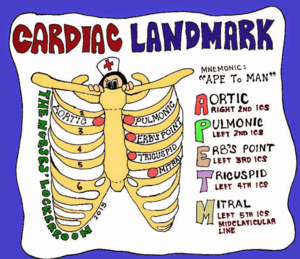14100033
Nursing care - emphysema
Resumo de Recurso
Questão 1
Questão
Ineffective airway [blank_start]clearance[blank_end] due to emphysema
The loss of [blank_start]supporting[blank_end] tissue increases risk of airway [blank_start]collapse[blank_end]. Air is trapped (increased residual vol.)
Assess resp status every [blank_start]1[blank_end] - [blank_start]2[blank_end] hours or as [blank_start]indicated[blank_end]
Depending on severity
Assess ABG results & SpO2 readings
Notify medical team of [blank_start]abnormal[blank_end] values/ change in status
Responda
-
clearance
-
supporting
-
collapse
-
1
-
2
-
indicated
-
abnormal
Questão 2
Questão
Interventions for ineffective airway clearance:
Place in [blank_start]Fowler’s[blank_end] or the [blank_start]tripod[blank_end] position to facilitate [blank_start]breathing[blank_end] & lung [blank_start]expansion[blank_end] (assists in reducing the [blank_start]WOB[blank_end])
Administer O2 as ordered
Administer medications as ordered
Provide referral to [blank_start]respiratory[blank_end] therapist
Monitor patient’s fluid intake to reduce likelihood of airway [blank_start]collapse[blank_end]
Provide [blank_start]rest[blank_end] between activities
Teach breathing techniques to control breathing [blank_start]pattern[blank_end] (i.e [blank_start]pursed[blank_end] lip or abdominal breathing)
Responda
-
Fowler’s
-
tripod
-
breathing
-
WOB
-
expansion
-
respiratory
-
collapse
-
rest
-
pattern
-
pursed
Questão 3
Questão
Inadequate nutrition
In advanced COPD - fatigue due to [blank_start]hypoxaemia[blank_end] caused by any effort can lead to a lack of adequate intake. The increased [blank_start]metabolic[blank_end] demands of increased WOB leading to an increase in req’d energy [blank_start]input[blank_end].
Assess nutritional status - [blank_start]BMI[blank_end], [blank_start]diet[blank_end] history & skinfold if applicable
Document input and liaise with [blank_start]dietitians[blank_end] re: higher energy diet
Monitor lab values including serum [blank_start]albumin[blank_end] and electrolytes (the individual may not be getting enough protein)
Provide frequent, [blank_start]small[blank_end] meals with between-meal supps
Position patient appropriately for meals
Assist to choose [blank_start]preferred[blank_end] meals; encourage family members to bring food from home if allowed
Bedside snacks
Provide mouth-care to increase [blank_start]appetite[blank_end]
If oral intake is inadequate discuss [blank_start]enteral[blank_end] or parenteral feeding with medical staff
Responda
-
hypoxaemia
-
input
-
metabolic
-
BMI
-
diet
-
dietitians
-
albumin
-
small
-
preferred
-
appetite
-
enteral
Questão 4
Questão
Compromised [blank_start]family[blank_end] coping
Depending on the prognosis and individuals involved
Assess interactions between individuals and family
Assess the [blank_start]impact[blank_end] of the illness on the family
Encourage expression of [blank_start]feelings[blank_end] between family members
Initiate care conference involving the person, family and [blank_start]interdisciplinary[blank_end] team members
Consider referral to [blank_start]social work[blank_end] if appropriate
Responda
-
family
-
impact
-
feelings
-
interdisciplinary
-
social work
Questão 5
Questão
Patient education:
There may be a potential conflict if the person is disinclined to quit smoking even with a diagnosis of emphysema
[blank_start]Education[blank_end] should be provided in [blank_start]written[blank_end] and verbal form re: [blank_start]risks[blank_end] associated with continuing to smoke and [blank_start]benefits[blank_end] from quitting
These should be provided to the [blank_start]family[blank_end] also
Educate family members that smoke about the dangers of [blank_start]passive smoking[blank_end]
Demonstrate [blank_start]respect[blank_end] for decisions made in this area regardless
Responda
-
written
-
Education
-
risks
-
benefits
-
family
-
passive smoking
-
respect
Quer criar seus próprios Quizzes gratuitos com a GoConqr? Saiba mais.

